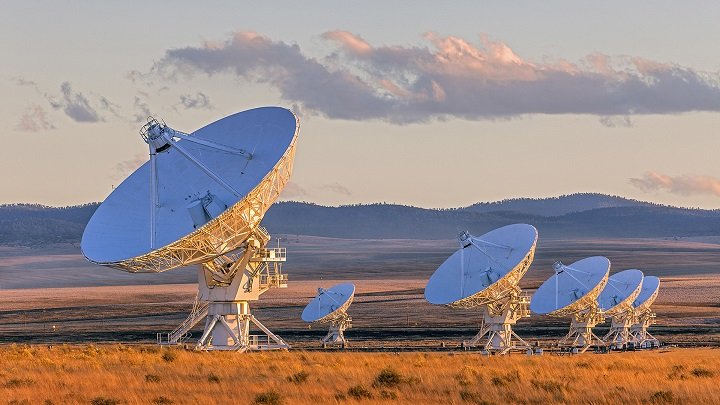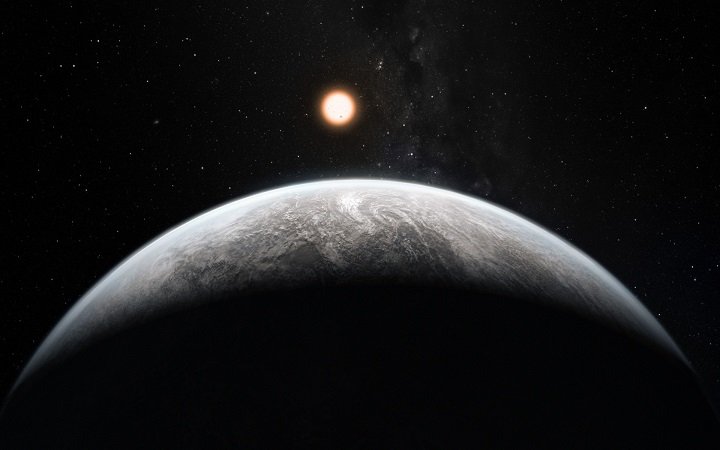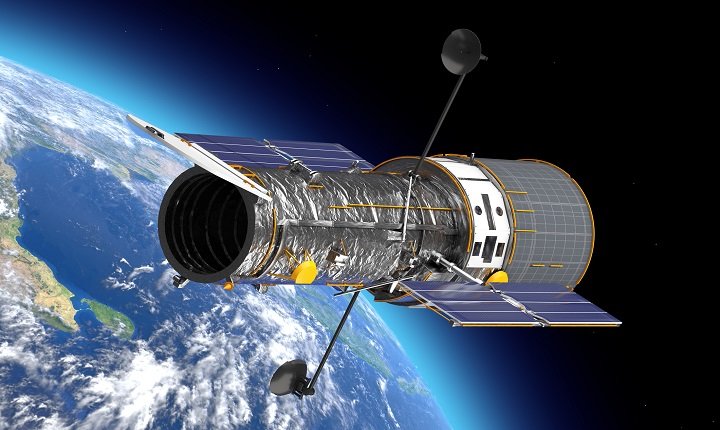
Breakthroughs in space telescope Space has continuously interested people. For centuries, we’ve looked up at the stars and pondered what lies past our planet. With the advancement of capable space telescopes, we’re presently able to peer into the profundities of the universe, finding unused systems, planets, and wonders that were once past our reach. The advance made in this field, particularly in later a long time, has been nothing brief of revolutionary.
In this web journal, we’ll investigate a few of the greatest breakthroughs in space telescopes, how they work, and what they’ve uncovered almost the cosmos.
Why Are They Important of Breakthroughs in space telescope?

Before jumping into the most recent breakthroughs, let’s to begin with get it what a space telescope is. Not at all like ground-based telescopes, which are found on Soil, space telescopes are set past our planet’s environment. This area is pivotal since Earth’s climate can mutilate light, blocking our see of numerous firmament objects. By putting telescopes in space, researchers can get a clearer and more point by point see of the universe.
Why are space telescopes important?
- Clearer Perceptions: In space, telescopes don’t have to bargain with climatic obstructions, giving much more honed images.
- Wider Run of Wavelengths: Space telescopes can watch bright, infrared, and X-ray light—types of light that are blocked by Earth’s atmosphere.
- Discovering Unused Universes: Numerous exoplanets (planets exterior our sun oriented framework) have been found utilizing space telescopes.
The Hubble Space Telescope Clearing the Way for Discovery
When individuals think of space telescopes, the Hubble Space Telescope regularly comes to intellect to begin with. Propelled in 1990, Hubble has given a few of the most breathtaking and point by point pictures of the universe. From dazzling pictures of removed systems to profound areas appearing thousands of systems in a single picture, Hubble changed the way we see the cosmos.
What Has Hubble Discovered?
- The Extension of the Universe: One of Hubble’s major commitments was giving solid prove that the universe is extending. It made a difference affirm the hypothesis of dim vitality, a secretive constrain driving this expansion.
- Distant Systems: Hubble has moreover given us the capacity to see universes that are billions of light-years absent. These pictures have permitted researchers to consider how worlds advance over time.
- Exoplanets: Whereas not outlined particularly to discover planets, Hubble has contributed to the revelation of a few exoplanets, including to our developing list of removed worlds.
Did You Know? The Hubble Telescope’s mission was initially arranged to final as it were 15 a long time, but it has been going solid for over three decades, much appreciated to different adjusting missions by NASA astronauts.
James Webb Space Telescope: The Unused Monster in the Sky
While Hubble has been groundbreaking, it’s presently joined by another capable apparatus: the James Webb Space Telescope (JWST). Propelled in 2021, JWST is frequently alluded to as Hubble’s successor. But it’s much more than that—it’s the most progressed space telescope ever built.
What Makes the James Webb Breakthroughs in space telescope?
- Infrared Vision: JWST fundamentally watches in the infrared portion of the range, permitting it to see through clean clouds that piece obvious light. This implies it can peer into star-forming locales and identify planets in removed sun powered systems.
- Bigger Reflect: JWST has a 6.5-meter reflect, which is much bigger than Hubble’s 2.4-meter reflect. A bigger reflect implies it can collect more light and see fainter objects.
- Looking Back in Time: Since light takes time to travel, JWST will be able to watch the most punctual systems, shaped fair a few hundred million a long time after the Huge Bang.
Since its dispatch, JWST has as of now captured astonishing pictures and information that are reshaping our understanding of the universe. From watching far off stars being born to considering the airs of exoplanets, its disclosures are fair beginning.
TESS and the Look for Exoplanets
The Transiting Exoplanet Study Disciple (TESS), propelled in 2018, is another key player in present day space science. Not at all like Hubble and JWST, which see more profound into the universe, TESS is centered on finding planets around adjacent stars. It does this by watching the slight diminishing of a star when a planet passes in front of it, a strategy known as the travel method.
Key Accomplishments of TESS:
- Thousands of Unused Planets: TESS has as of now found thousands of potential exoplanets, a few of which are in the livable zone—the locale around a star where fluid water might exist.
- Detailed Thinks about: With TESS, cosmologists can presently center on examining the characteristics of these planets, counting their measure, composition, and atmospheres.
TESS is making a difference to reply one of the most energizing questions in science: Are we alone in the universe?
How Space Telescopes Advantage Us on Earth of Breakthroughs in space telescope
Launched in 1999, the Chandra X-ray Observatory is a space telescope outlined to watch X-rays from high-energy districts of the universe, such as the remainders of detonated stars, dark gaps, and clusters of universes. X-rays do not enter Earth’s environment, so Chandra must be found in space.
Major Discoveries:
- Black Gaps: Chandra has been instrumental in considering dark gaps, counting capturing pictures of the zone encompassing supermassive dark holes.
- Dark Matter: A few of Chandra’s perceptions have given clues around the nature of dull matter, a secretive substance that makes up almost 27% of the universe.
- Supernova Leftovers: By considering the X-rays transmitted by supernova remainders, Chandra has made a difference researchers superior get it the life cycle of stars.
Chandra proceeds to be a significant apparatus in investigating the savage and lively side of the cosmos.
Future Space Telescopes: What’s Next?
While the telescopes specified over have as of now made critical commitments. The future of space telescopes looks indeed more promising. Here are a few up and coming missions:
- Nancy Beauty Roman Space Telescope (2027): Set to dispatch afterward this decade, this telescope will offer assistance reply questions around dull vitality and dim matter. It will moreover look for removed exoplanets.
- LUVOIR (Huge UV Optical Infrared Surveyor): Still in its early arranging stages, LUVOIR seem be a multi-purpose space telescope outlined to ponder a wide extend of wonders, from exoplanets to the early universe.
- Hatbox (Livable Exoplanet Observatory): This mission points to specifically picture Earth-like exoplanets and analyze their airs for signs of life.
How Space Telescopes Advantage Us on Earth of Breakthroughs in space telescope

While space telescopes are fundamentally outlined to investigate the universe. Their innovation has various benefits for life on Earth.
- Advances in Innovation: Numerous advances created for space telescopes, such as progressed optics and sensors, have applications in pharmaceutical, communications, and other industries.
- Inspiration for Future Eras: Space investigation rouses youthful individuals to seek after careers in science, innovation, designing, and math (STEM). These areas are basic for fathoming issues here on Soil, from climate alter to vitality production.
- Better Understanding of Our Planet: By considering other planets and sun based frameworks, researchers can learn more approximately Earth’s claim climate and the potential dangers we confront, such as space rock impacts.
Conclusion
Space telescopes have changed our understanding of the universe. From the Hubble Space Telescope to the James Webb Space Telescope and past, these rebellious permit us to see advance and clearer than ever some time recently. The revelations they’ve made—whether it’s far off worlds, modern exoplanets, or puzzling dark holes—are extending our information of the universe and our put inside it.
As innovation proceeds to make strides. We can as it were envision what future space telescopes will reveal. The universe is tremendous, and we’ve as it were fair started to scratch the surface of its mysteries.
For those interested in learning more, check out assets from driving space organizations like NASA or the European Space Organization. Their websites are full of intriguing data almost progressing missions and future plans in space exploration.
FAQs:
-
What is the primary distinction between space telescopes and ground-based telescopes?
Space telescopes work over Earth’s environment, giving clearer and more point by point pictures than ground-based telescopes. Which are influenced by climatic distortion.
2. What are exoplanets, and how do space telescopes offer assistance discover them?
Exoplanets are planets found exterior our sun powered framework. Space telescopes, like TESS, identify them by watching the diminishing of a star when a planet passes in front of it.
3. Why is the James Webb Space Telescope considered more effective than Hubble?
JWST has a bigger reflect and works basically in the infrared range. Permitting it to see objects that are as well swoon or clouded for Hubble to detect.
4. What is the most energizing disclosure made by space telescopes?
One of the most energizing revelations is the prove of dim vitality. A puzzling drive driving the development of the universe.
5. Will space telescopes ever supplant ground-based telescopes?
No, space and ground-based telescopes complement each other. Ground-based telescopes can still give important information and are much less demanding to keep up.